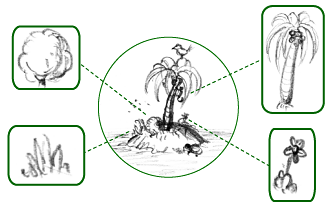This article needs additional citations for verification .(August 2009) |

Flora (pl.: floras or florae) is all the plant life present in a particular region or time, generally the naturally occurring (indigenous) native plants. The corresponding term for animals is fauna , and for fungi, it is funga . [1] Sometimes bacteria and fungi are also referred to as flora as in the terms gut flora or skin flora for purposes of specificity. [2] [3] [4]

